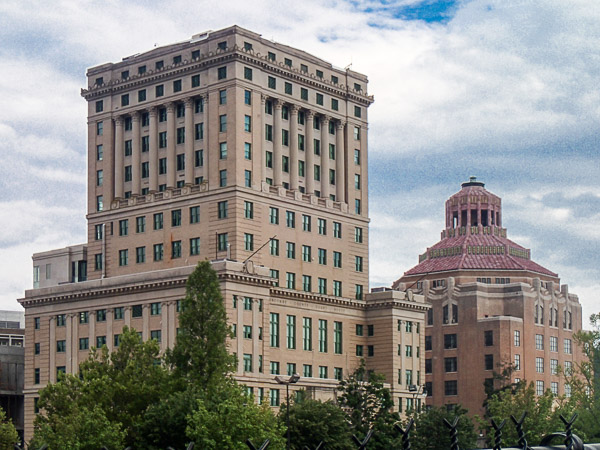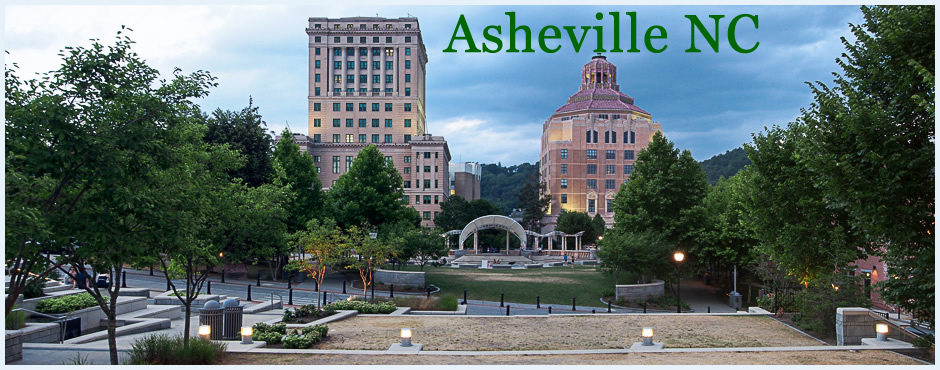
City of Asheville
The city of Asheville was established in 1797 as the trading center for Buncombe County. Asheville continued to grow through the 19th century as the economic and government center of western North Carolina. After the arrival of the railroad in 1880, Asheville became a cosmopolitan and a tourist destination known for its beautiful setting and its first class resorts and health facilities.
The commercial buildings in downtown Asheville date from the end of the 19th century to the 1940s. The downtown buildings range from one-story buildings to modest skyscrapers, with examples of popular architectural styles such as Romanesque Revival, late Victorian, Neo-Gothic, Neo-Georgian, Classical Revival and Art Deco.
The Downtown Asheville Historic District encompasses the finest collection of late 19th- and early 20th-century urban architecture in North Carolina.
Asheville is a unique city, surrounded by beautiful mountains, and has many attractions. The Biltmore Estate, the largest home in the United States with 250 rooms and 178,900 square feet in living space, is very popular with visitors. Once 125,000 acres, there is 75 acres remaining that include a formal gardens, a conservatory, a winery, and a 213 room hotel. Hiking trails, biking trails, a lake, horseback riding, and several restaurants provide other attractions.
Another popular attraction in Asheville is the Grove Park Inn and Spa.
Asheville provides multiple accesses to the Blue Ridge Parkway.
- Town Country Road near the center of town goes from Tunnel Road to the Blue Ridge Parkway. This road is very curvy.
- The Blue Ridge Parkway intersects with Hwy. 70 (Tunnel Road) 5.5 East of the center of town and about 0.5 mile pass the VA Hospital. You will find the VA Hospital on the left side of Hwy. 70.
There are a lot of "Fun things to do" and plenty to explore in Asheville and Buncomb County. So leave the motel room behind and get out and explore.


